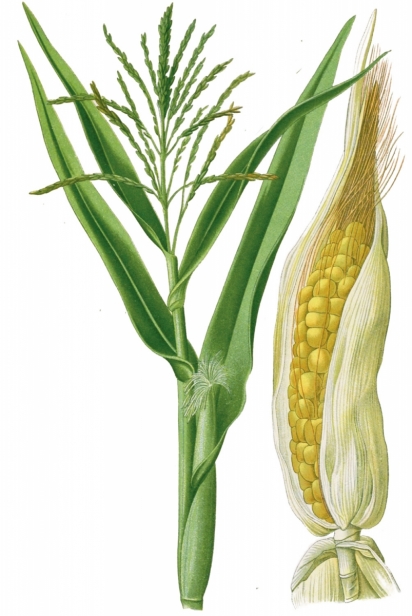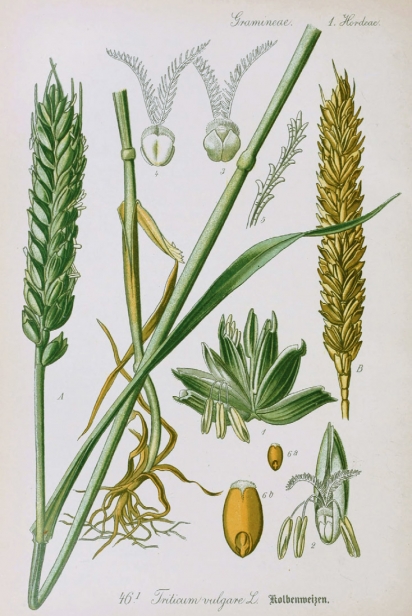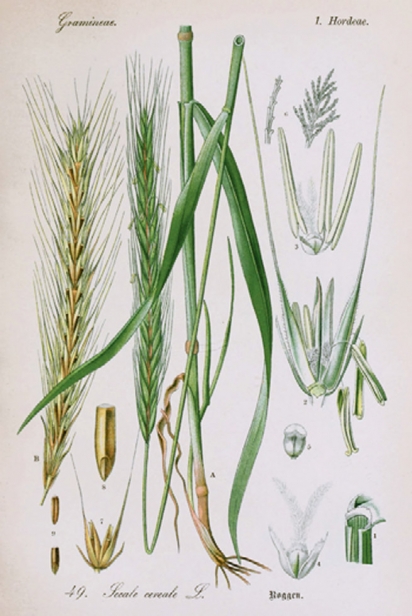The Botany of Bourbon
It’s no big secret that Louisville is blessed with the brains of the bourbon world. Whether it’s making bourbon, marketing bourbon, entertaining with bourbon or just plain wowing people about bourbon, Louisville (OK … Kentucky!) is the place to be. So it might seem a tad off the mark to have the local plant guy — who grew up in New York City, of all places — spouting on about the historical hometown nectar of the Bluegrass State.
Sitting on 60 acres of Oldham County land, Yew Dell Botanical Gardens would seem a world away from the storied history and big-time commerce of the bourbon industry. We grow beautiful display gardens. We teach people, from kids to pros, about plants and gardens. We do research on plants, always looking for the next best, most pest-resistant and most eye-poppingly amazing plant. But when it comes right down to it, what we do is connect people with anything with a cell wall. Whether you want to plant a lawn, grow your own veggies, keep a houseplant alive or just spruce up your home landscape, we’ll help you connect with plants. And while we much prefer to grow plants with the intention of keeping them alive, grinding them up to make bourbon isn’t such a bad idea either.
Most discussions about bourbon making start with the usual: the mash of grains, yeast and water with at least 51% of the grain being corn. There’s the new, charred white oak barrel and a few other bits and pieces. But what often gets left out of the discussion is why grains … why these particular grains … and what’s their story?
The primary grains used in bourbon are corn and barley (always) with either rye or wheat or some of both rounding out the mix, and they all have a special place in history. All four were initially domesticated from scraggly little weedy-looking species starting between 7,000 and 10,000 years ago. Corn (Zea maize) originated in Central America. Barley’s (Hordeum vulgare) ancestral species were native to the Himalayan Mountains but were domesticated primarily in the Middle East. Rye (Secale cereale) and wheat (Triticum species) both hail from the Middle East through western Turkey. And all four formed the agricultural base of entire civilizations.
But here’s the question: Why are they all grasses? Why didn’t whole civilizations spring up with the support of kumquats or pawpaws or cantaloupes?
First, grasses are among the most efficient plants on the planet. Their unique architecture allows them to intercept a greater portion of incident sunlight and to do so with leaves throughout their canopy. And if you think about it, it makes perfect sense. An oak tree intercepts most of its sunlight with its upper and outer leaves. Those located lower in the canopy get shaded out and in many plants actually become somewhat parasitic, using up more energy than they capture from the sun.
The second unique bit about grasses is that they grow from the bottom of the plant. Most plants have their growing points located at the ends of the branches and that’s all fine and good … that is, until some prehistoric megafauna species comes lumbering along and browses off the top of the plant. In that case most plants have a tough time responding whereas grasses just keep growing … from their growing points located at ground level. You think deer are a problem? How about having to be mastodon proof!
And then there’s the photosynthetic efficiency of grasses. Most higher plants employ what is referred to as C-3 photosynthetic biochemistry. That’s just a fancy way of saying that a key intermediate point in the system involves a three-carbon compound. Grasses, on the other hand, employ C-4 biochemistry where that key intermediate is a four-carbon compound. And while you probably don’t care much about high light intensity inefficiencies of the RuBisCo enzyme system in C-3 plants while you’re swirling 20-year-old bourbon around your glass, that little bit of seemingly esoteric biochemistry allows grasses to pack more carbohydrate punch per unit of absorbed sun energy. And it’s those precious carbohydrates that make for bourbon magic.
Finally there’s the moisture content thing. It’s pretty hard to imagine the ancient Egyptians storing pyramids full of cantaloupes as the basis of their agricultural system. The fact that you can dry grains down to very low moisture content allows for long term storage. That allows you to store excess foodstuffs as a hedge against famine or flood years. Just imagine opening up that pyramid or silo filled with year-old cantaloupes!
Now, if you’re a bourbon drinker you know that corn adds the sweetness, rye a bit of spice and the wheat can be mellowing. But what about that barley? And why is the barley malted … and what the heck is malting anyway?
Malting is essentially a pre-germination treatment. You bring the dry barley grains up to a critical moisture content and temperature and they start to think it’s germination time. And the first thing a barley grain does prior to germination is wind up the internal biochemistry to break down the stored starch reserves into sugars … the sugars consumed by the yeasts that create the alcohol. Well, it turns out that barley has a gigantic supply of a protein named amylase that is über efficient at turning starch into simple sugars. And it doesn’t matter if the starch comes from barley or rye or wheat or corn.
So you grind up some starch-laden corn, add a bit of malted barley with its starch-busting amylase, toss in some rye and or wheat for good measure and then all you need is a little yeast, a touch of branch water … oh yeah, and someone with a hundred or two little secrets up his or her sleeve … and that’s all there is to it!
I still like working with live plants … but even this New York City kid can see the plus of a few well-chosen sacrifices for the greater good. Enjoy!







